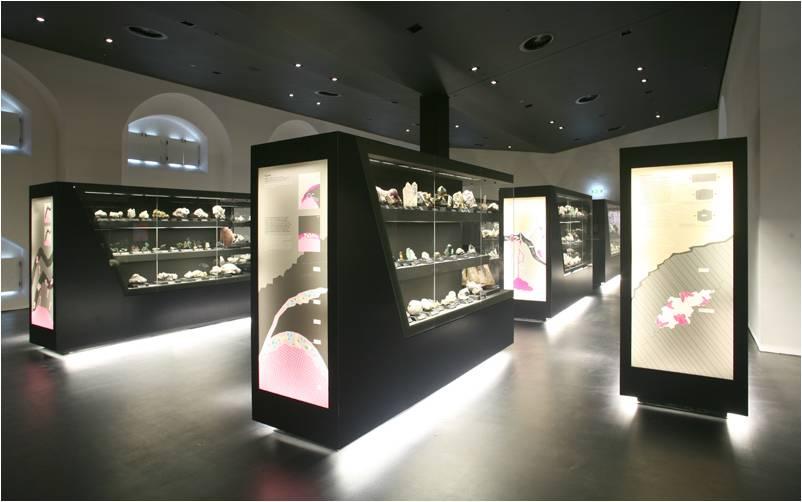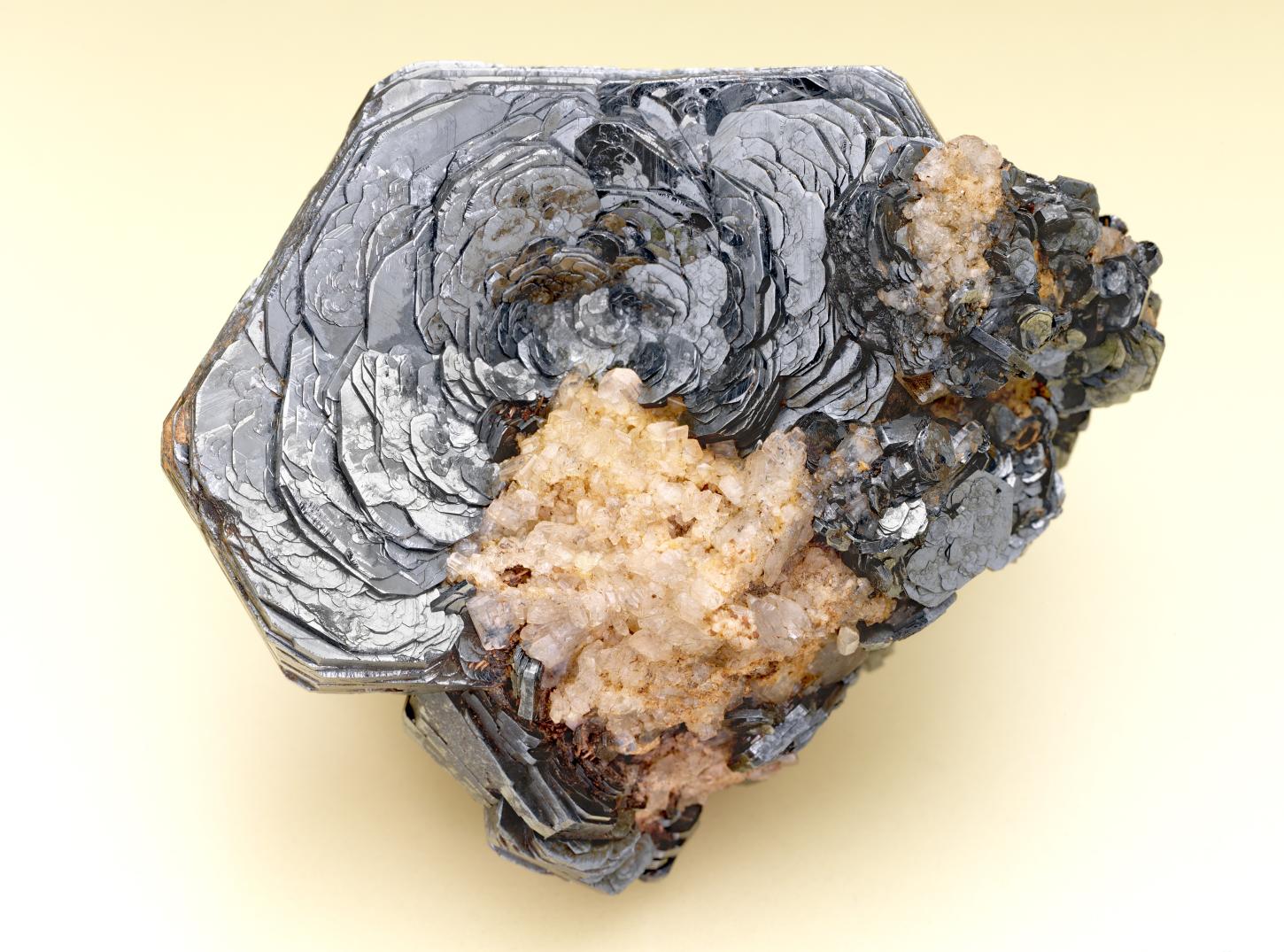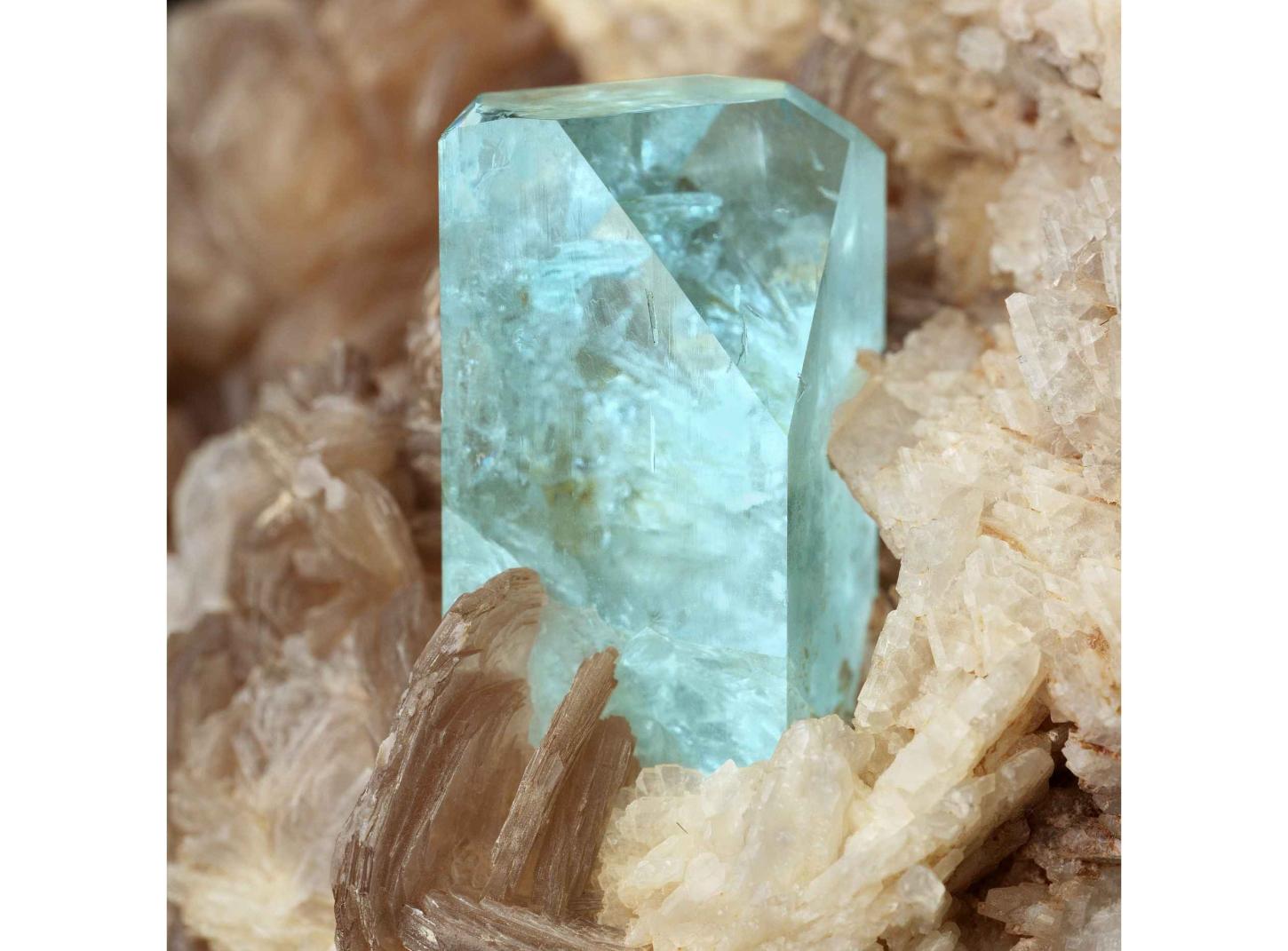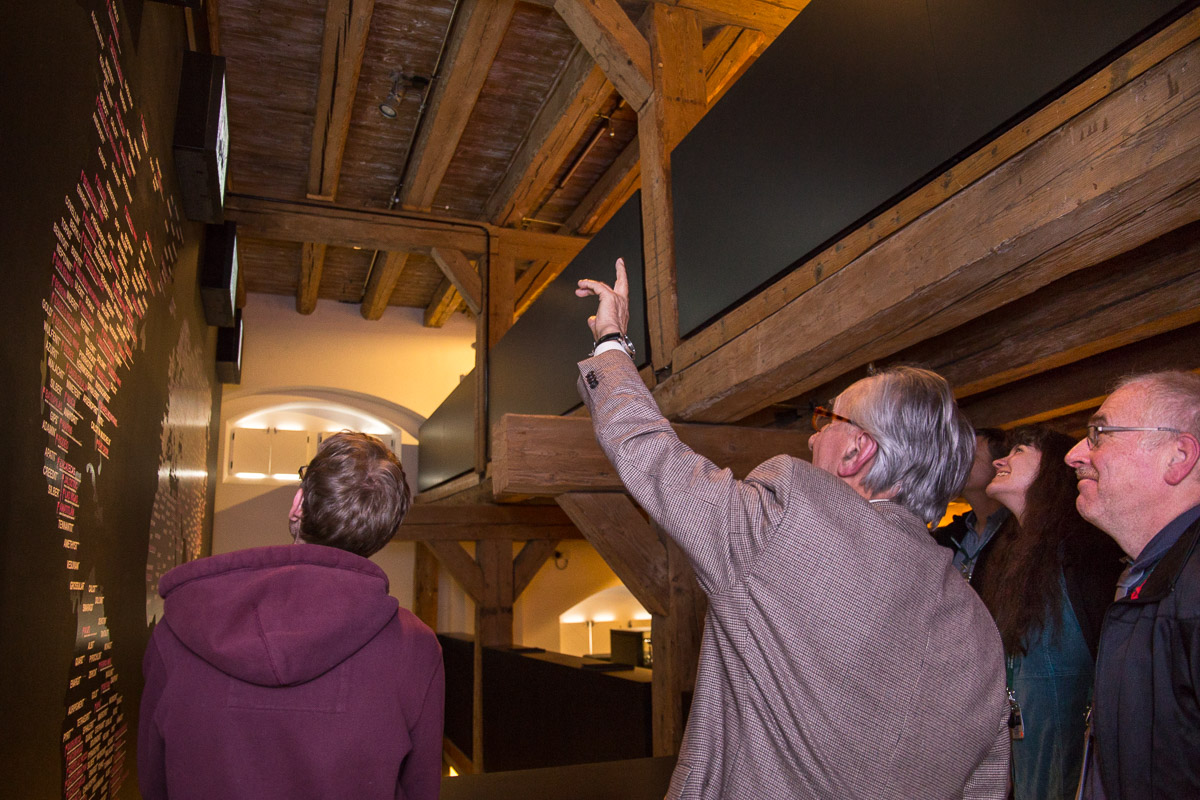Enchanting shapes
In the Europe Hall, you can expect shiny metallic ores in shades of grey, silver and gold. They come mainly from deposits in Romania, Bulgaria and Russia.
The Western European part of the exhibition shows the enormous diversity of our continent. Large rock crystal specimens from the Alps, magnificent fluorites from England, yellow sulphur crystals from Sicily and many other minerals from a total of 22 countries are shown here.
With the "Journey to the Origin" you will learn how minerals and rocks are formed and what conditions are needed for minerals to form beautiful, large crystals.
Iron rose from the Alps
The leaves of a rose, reminiscent of the filigree arrangement of the flake-like hematite crystals on this specimen. Haematite is a very common mineral that occurs all over the world. However, such beautiful iron roses are only found in a few places worldwide.
The name haematite comes from the Greek and means "blood" or "bloody", because in very thin crystals and when crushed, haematite becomes blood-red.
The mineral has been an important iron ore for thousands of years due to its high iron content. It is still mined today for iron and steel production.
A blue treasure from the Urals
The blue topazes from Murzinka in the Urals are a symbol of the Urals' numerous gemstone deposits. These have significantly contributed to making the Russian tsar family of the Romanovs the richest royal family in the world.
Many of the former gemstone sites in the Urals have already been exhausted, so that clear sky-blue crystals like the one on this specimen are extremely rare today.
By the way: You can admire the most beautiful topazes of Germany in the Mineralogical Collection Germany.





